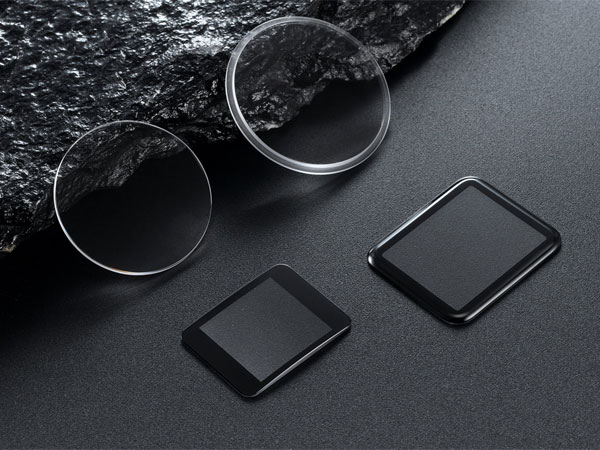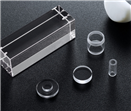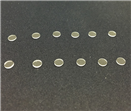

Time:2023-10-09
Sapphire lenses with light windows can be widely used in various fields such as security, car accessories, digital cameras, lasers, optical instruments, etc. With the continuous development of the market, the application of lens technology is also becoming increasingly widespread. Convex lens: thick in the middle, thin at the edges, with three types: biconvex, plano convex, and concave convex; Concave lens: thin in the middle, thick at the edges, with three types: biconcave, plano convex, and convex concave.
The sapphire light window adopts the following processing methods:
1. Hydrated polishing
The principle of hydrated polishing is that during the processing of ceramic polishing machines, the polishing disc rubs against the surface of sapphire, generating high temperature and high pressure at the contact point, activating the surface atoms of sapphire, and utilizing superheated water vapor. Gas molecules interact with water on their surface, forming a hydration chemical reaction layer at the interface. Then, with the help of superheated steam, the hydration layer on the surface of sapphire lenses is removed using the friction between the two, thereby achieving ultra precision machining of the surface.

2. Laser polishing
Through the thermal and photochemical interactions between laser and sapphire, it can be divided into two methods: cold polishing and hot polishing. Cold polishing uses short wavelength lasers to chemically decompose and remove materials. After the sapphire surface material absorbs light molecules, the surface material structure is destroyed, causing the surface material to detach and achieve material removal. Sapphire optical window thermal polishing generally uses continuous long wavelength lasers to remove material surface components through melting, evaporation, and other methods. However, its thermal temperature gradient is large, and thermal stress is high, which can easily lead to cracks, surface roughness, etc., making it more suitable for rough polishing. The cold polishing process has low thermal stress and rarely produces cracks, making it suitable for ultra precision polishing. The shorter the time the laser acts on the surface of the material, the smaller the impact on the material surface, and the better the processing effect. Therefore, ultrafast laser technology has become a hot topic in the field of precision manufacturing. In the field of precision machining, traditional nanosecond laser processing equipment still occupies the majority of the market.
Sapphire has the advantages of wear resistance, scratch resistance, good light transmittance, and high hardness, and is widely used in fields such as aviation, defense, LED, medical, and consumer electronics. Sapphire lenses have entered the consumer electronics market, bringing broader growth opportunities. Precise optical path design ensures high-quality laser transmission. Equipped with an automated processing system, it can achieve fully automatic loading and unloading, automatic focusing and laser cutting, reducing labor costs for customers.






Tel
Mobile phone
Customer service
TOP